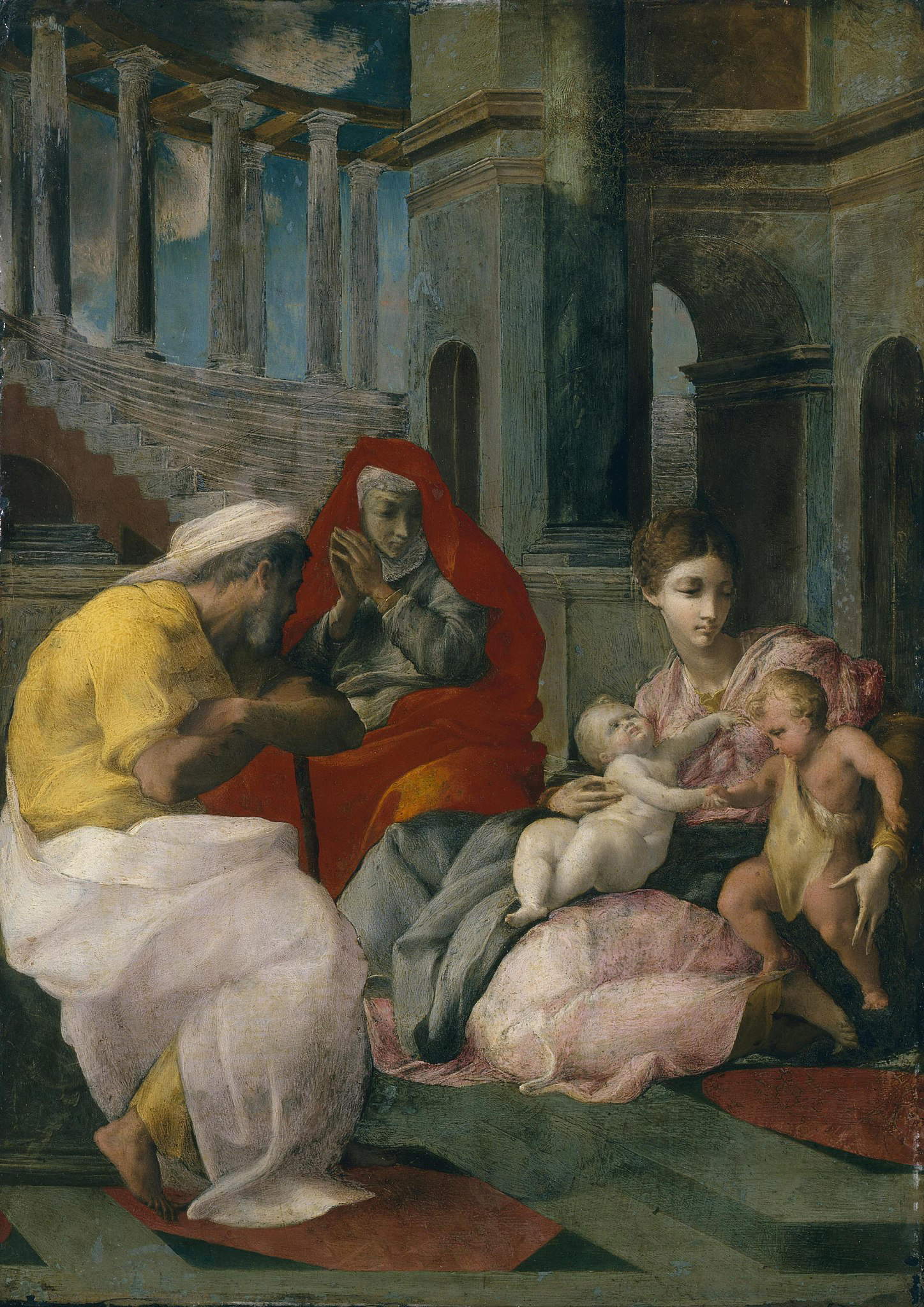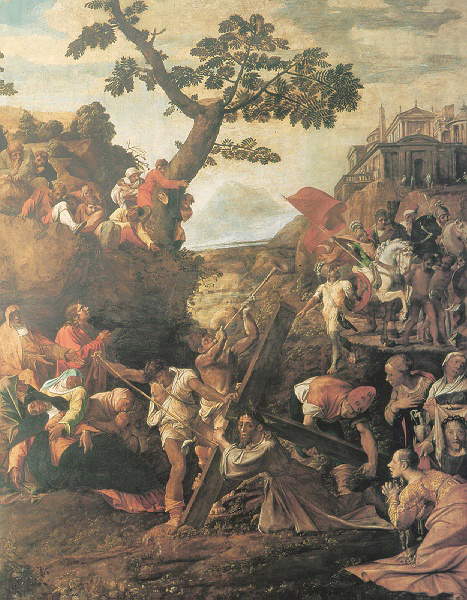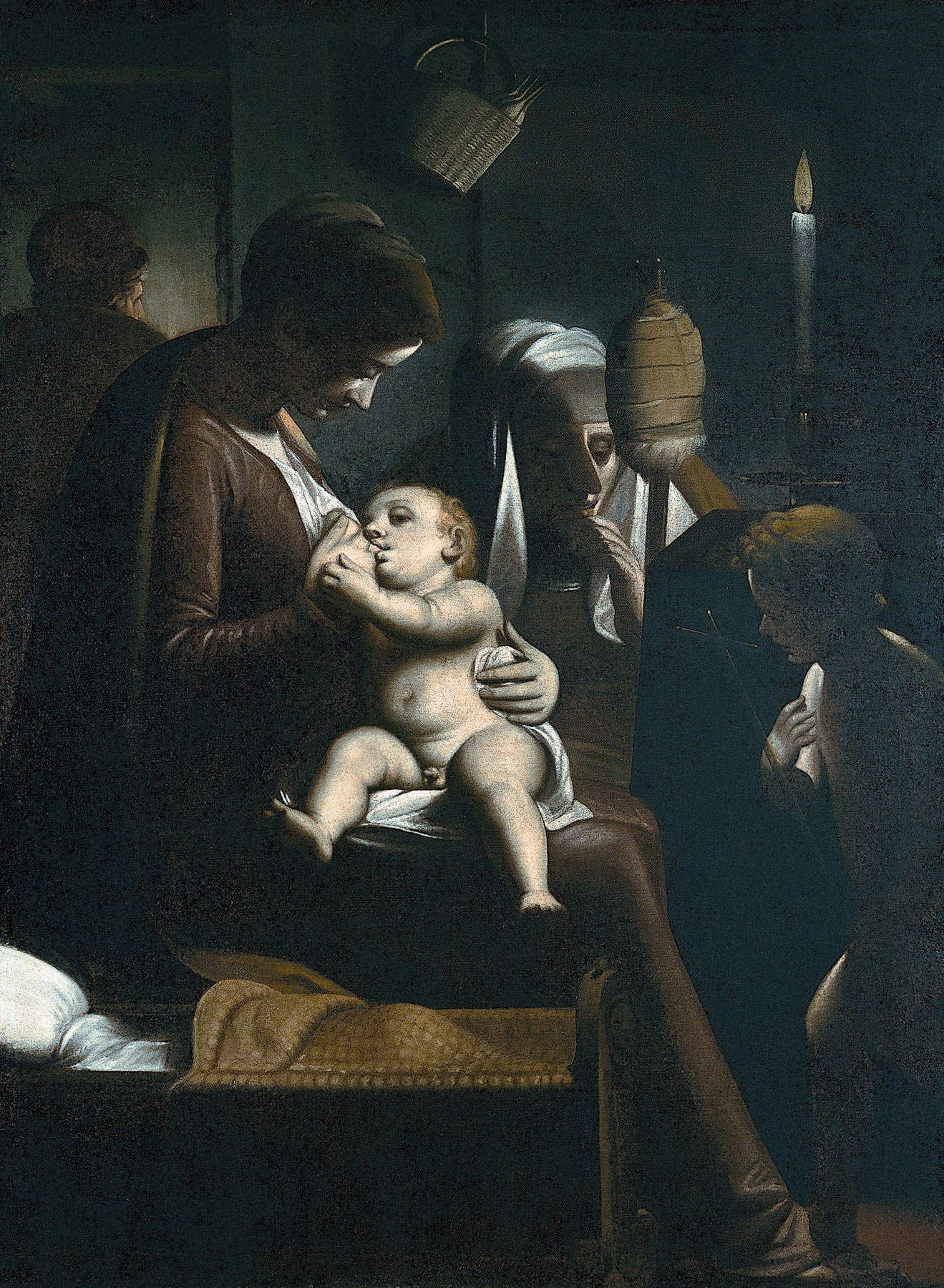Between the 1510s and the 1550s, a flourishing circle of artists had formed in Rome around the figure of Raphael Sanzio, which developed when, after 1520, the year of the Urbino artist’s death, he inherited his commissions and developed his language. This occurred especially during the years of the pontificate of Clement VII, born Giulio de’ Medici. However, this happy season of Mannerism was abruptly interrupted in 1527, the year of the sack of Rome. This event caused the dispersion of the artists working in Rome at the time (among them was Rosso Fiorentino, who was also imprisoned for some time, but soon after managed to take refuge in Perugia), who moved to various locations scattered throughout the peninsula, thus spreading the Mannerist innovations and Raphaelesque language.
Among the artists who left the capital of the Papal States (although, in this case, in 1524) was Giulio Pippi better known as Giulio Romano (Rome, c. 1499 - Mantua, 1546), who landed in Mantua, the city where he entered the service of the Gonzaga family and from where he would not move for the rest of his career. Giulio Romano was probably Raphael’s best pupil, and in the first part of his career (that is, when he was still in Rome) he demonstrated a very close proximity to the manner of the great painter from Urbino, but he soon managed to elaborate a different and highly original language.
Giulio Romano in fact revisited Raphaelesque classicism while breaking every balance, however, giving rise to achievements now characterized by very loose and animated lines, now by works charged with drama and pathos that bordered almost on the grotesque (an example is the famous Camera dei Giganti at Palazzo Te in Mantua, a building for which Giulio Romano, who was also an architect, oversaw the design, as well as the fresco decoration of several rooms). In Mantua, Giulio Romano collaborated with Francesco Primaticcio (Bologna, 1504 Paris, 1570). Primaticcio later knew how to elaborate a classicism that was now elegant, now animated, characterized by vigorous forms(Holy Family with St. John, c. 1541, St. Petersburg, Hermitage) dictated above all by his contact with Rosso Fiorentino, whom he met beginning in 1531, when both artists worked together at Fontainebleau (and Rosso and Primaticcio were in fact the two artists who best and most contributed to the formation of a Mannerist style in France).





Among the artists present in Rome in 1527 was, though not a pupil of Raphael, Francesco Mazzola known as Parmigianino (Parma, 1503 - Casalmaggiore, 1540), one of the most promising painters of his time (in 1527 he left Rome to move to Bologna): a native of Parma and strongly inspired, for this reason, in his early works by the art of Correggio. Parmigianino arrived in Rome in his early twenties, but he was already an established painter, with also illusionistic frescoes to his credit that drew on the art of Correggio(Stories of Diana and Actaeon, c. 1524, Fontanellato, Rocca).
Parmigianino was as elegant an artist as he was highly eccentric. Eccentricity was a constant that characterized almost his entire career (in fact, his paintings are full of original and extravagant symbolism and inventions, in keeping with the more bizarre Mannerist spirit that he shared with other great artists of the time), so much so that it conditioned him until the end: Giorgio Vasari says that the Parma painter had a passion for alchemy, and because of this passion he came to neglect art and even himself, so much so that he died prematurely at the age of thirty-seven (it seems to be ruled out, however, that his passion for alchemy had so heavily influenced his conduct). Parmigianino elaborated an entirely personal style that rejected all kinds of conventions: the painter went so far as to reject the natural proportions of the figures(Madonna with the Long Neck, 1534-1540, Florence, Uffizi) and to elaborate a spatiality that departed from traditional canons, all often with tense and fast brushstrokes that increase the sense of estrangement we have when we look at his works(Altarpiece of San Zaccaria, c. 1530, Florence, Uffizi). It is likely that at the basis of this way of painting there was, surely, a tormented personality that led the artist, at the end of his existence, to cover himself with debt and to portray himself with a suffering face and with an apparent age far greater than his real one.
One of the few artists to leave Rome to go to the south was Polidoro Caldara known as Polidoro da Caravaggio (Caravaggio, c. 1500 - Messina, 1543) who, active in Naples and Sicily, gave his personal interpretation of Raphaelesque classicism, which he combined with Nordic atmospheres derived from his reading of Flemish works found in southern Italy, and a certain pathetic and emotional charge(Andata al Calvario, c. 1533, Naples, Museo Nazionale di Capodimonte).




Piero Bonaccorsi known as Perin del Vaga (Florence, 1501 - Rome, 1547) also left Rome in 1527 to move to Genoa, where he became one of the most important players in local artistic life. Having entered the service of Andrea Doria, Perin del Vaga revisited his style of great fantasy and classicism in a more dramatic sense, just as Giulio Romano was doing in those same years in Mantua (though probably without coming into contact with the painter from Rome). Although Perin del Vaga did not use certain illusionistic solutions that Giulio Romano did at Palazzo Te, he did, however, have on his side an exceptional virtuosity evident in many of his achievements (as in Lotta dei Giganti, 1531-1533, Genoa, Villa del Principe), which makes his art fully adhere to the Mannerist spirit.
One of the most important artists of the time also worked in Genoa, although he belonged to a later generation: Luca Cambiaso (Moneglia, 1527 - Madrid 1585), an artist who in the early stages of his career was trained by copying the works of, among others, Perin del Vaga himself, who was also an excellent draughtsman. Luca Cambiaso proved to be open to a wide variety of influences: through his contact with Mannerist painters he became acquainted with the work of Michelangelo and Raphael, but he also broadened his field of interest to the great painting of northern Italy, from Correggio (from whom he took the great delicacy that is one of the most evident characteristics of Cambiaso’s poetics) via the Venetian painters, such as Titian and Tintoretto, who helped him meditate on color and light.
It was light that stood out among Luca Cambiaso’s most innovative and original features, which made the Ligurian artist an anticipator of Caravaggio and a source of inspiration for seventeenth-century artists such as Georges de la Tour and Mattia Preti. In fact, Luca Cambiaso left several nocturnes in which light, the great protagonist of his art, unnatural and often with almost metaphysical features, illuminates and brightens the environments highlighting the faces of the characters or the details on which the painter’s attention lingers, creating decidedly intimate and evocative atmospheres(Madonna of the Candle, c. 1570-1575, Genoa, Palazzo Bianco: read an in-depth discussion of the work here).
Bizarre wh imsy and reaction to conventional patterns, typical features of Mannerism, were instead taken to extremes by an artist who was Luca Cambiaso’s contemporary (but whose art had nothing to do with the latter’s), Giuseppe Arcimboldi (Milan, 1527 - 1593), one of the most imaginative authors in all of art history. His creative flair led him to create bizarre and sensational portraits in which the faces were actually composed of objects, vegetables, fruit, and elements taken from the world of nature(Summer, c. 1555-1560, Munich, Bayerische Staatsgemäldesammlungen): these were the famous composite heads that gave Arcimboldi fame throughout Europe, so much so that the artist was called to the court of Emperor Ferdinand I in Vienna. It was especially with Rudolph I in Prague that Giuseppe Arcimboldi’s extreme inventive ability found fulfillment, as the painter the sovereign shared the same passion for extravagance. Arcimboldi was also a very careful student of physiognomy and nature (thus continuing a tradition that in Lombardy dated back to the time of Leonardo), so much so that he found himself collaborating with one of the greatest scientists of the time, the Bolognese Ulisse Aldrovandi, for whom he made some illustrative drawings.
To the same generation belonged the most interesting exponent of Mannerism in Umbria (thus demonstrating how widespread the diffusion of the Mannerist style was in Italy), Niccolò Circignani known as il Pomarancio (Pomarance, c. 1530 - c. 1599), who worked for the Della Corgna family that ruled the marquisate of Castiglione del Lago: Circignani, looking up to the greats of the mature Renaissance and to contemporary Classicist painters, proposed a particularly sober and orderly declination of Mannerism but also demonstrated capacity for a dramatic and emotional charge that could almost border on violence. After all, we had entered the period of the Counter-Reformation and artists were adapting to the stylistic dictates of the time.
 |
| Mannerism in Italy: origins and development from Rome to Milan |
Warning: the translation into English of the original Italian article was created using automatic tools. We undertake to review all articles, but we do not guarantee the total absence of inaccuracies in the translation due to the program. You can find the original by clicking on the ITA button. If you find any mistake,please contact us.